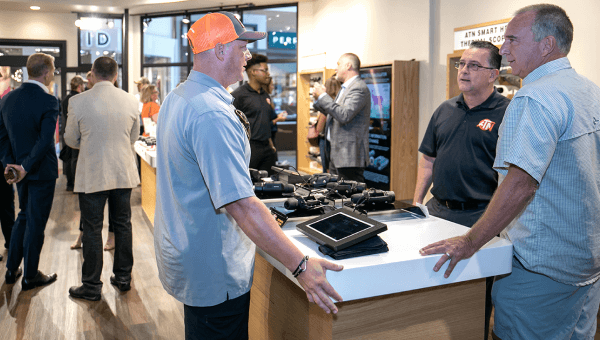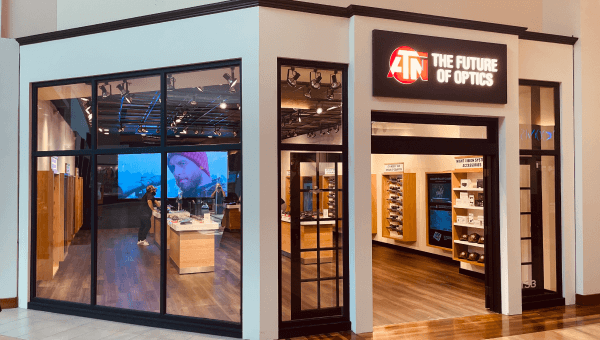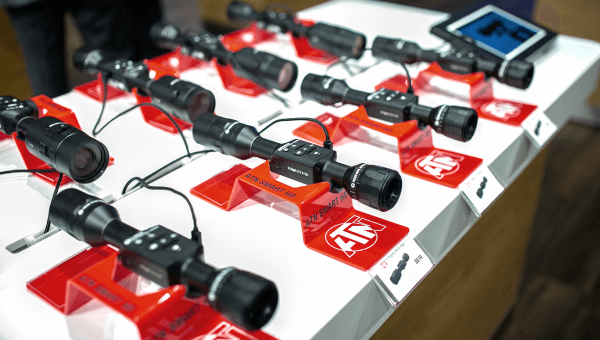Night Vision

Troubleshooting
I am trying to turn ON my night vision device, but it is not turning on? Did you check if the battery is fresh and inserted correctly into the device, matching the polarity displayed on the housing?
I have a fresh battery in my night vision device, but it is still not turning ON? Did you make sure the bright light sensor is covered? If not, your device probably thinks you are trying to turn it on in a brightly lite environment. This is a safety measure, in order not to accidently over expose the night vision device during daytime conditions.
FAQ
What are some precautions to using Analog Night Vision?
- The NVD should not be turned on in day light.
- The NVD should not be aimed at bright light (even in the dark).
- The NVD should not be disassembled without professional assistance.
- Try not to drop or shake the NVD.
- The objective lens of the NVD should not be touched (touch it only with soft non-abrasive cloth).
- It is better to keep the device in a case, in order not to damage it.
How does Night Vision work?
Night vision devices gather existing ambient light (starlight, moonlight or infra-red light) through the front lens. This light, which is made up of photons goes into a photocathode tube that changes the photons to electrons. The electrons are then amplified to a much greater number through an electrical and chemical process. The electrons are then hurled against a phosphorus screen that changes the amplified electrons back into visible light that you see through the eyepiece. The image will now be a clear green-hued amplified re-creation of the scene you were observing.
How can an NVD be focused?
A regular scope has an objective lens and eyepiece adjustment. First, adjust the objective lens to perfect the image. Then adjust the eyepiece to your eyesight. In binoculars or goggles each eyepiece must be adjusted separately. To do this close your left eye and adjust the right eyepiece. Then open you left eye and adjust the left eyepiece to get a full contrast image. Some night vision goggles require objective focusing first, and then adjusting the eyepieces.
- Remember, that all night vision devices have a minimal focusing distance, a minimal distance at which objects can appear in full focus.
How far can you see with an NVD?
There are many different variables that can affect the distance that you can see with a Night Vision device. The larger the object the easier it is too see. If you're trying to see details, we call this recognition range and if you're just trying to see whether something there is or maybe you will just see movement but won't be able to 100% determine who or what it is. This is called detection range. Another variable is lighting conditions. The more ambient light you have (starlight, moonlight, infrared light) the better and further you will be able to see. You can always see further on a night where the moon and stars are out then if it is cloudy and overcast. We typically state that you can tell the difference between a male and a female or a dog and a deer at about 75 to 100 yards. However, if you were looking across an open field and there was a half-moon out you could see a barn or a house 500 yards away.
- Remember, that the purpose of an NVD is to see in the dark not necessarily a long ways like a binocular.
What is Infrared Illuminator (IR) meant for (Complete Darkness)?
All Starlight scopes need some light to amplify. This means that if you were in complete darkness you could not see. Due to this we have a built in infra-red illuminator (IR) on all of our scopes. Basically what an IR does is throw out a beam of infra-red light that is near invisible to the naked eye but your NVD can see it. This allows you to use your scope even in total darkness. The IR works like a flashlight and the distance you can see with it will be limited. This allows our IR to extend out to 100 yards However, because of the power at a short distance the IR may cover only 40—60% of the viewing area.
What is the warranty for Analog Night Vision products?
Analog Night Vision have 2 years warranty.
What is the average lithium battery runtime with analog night vision?
Average runtime is 40 hours.
Can I use my analog night vision Day and Night?
No, you cannot use your analog night vision during the day.
Can I take analog night vision out of the country?
No, export paperwork is needed for all night vision and thermal optics. ATN does not secure such paperwork for retail customers.
Can I export, i.e. mail, my analog night vision oversees to countries not considered U.S. territories?
No, export paperwork is needed for all night vision and thermal optics. ATN does not secure such paperwork for retail customers.






